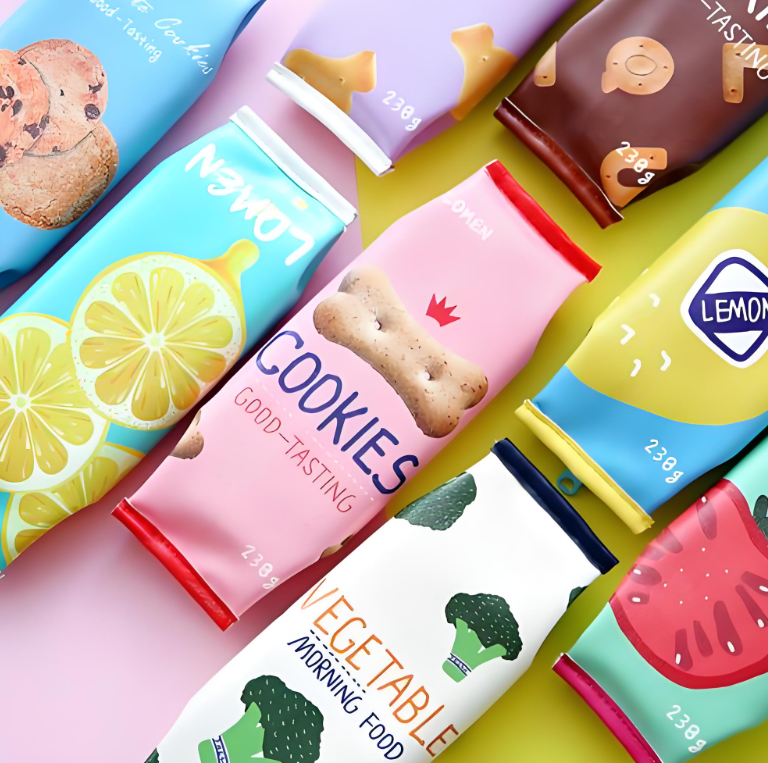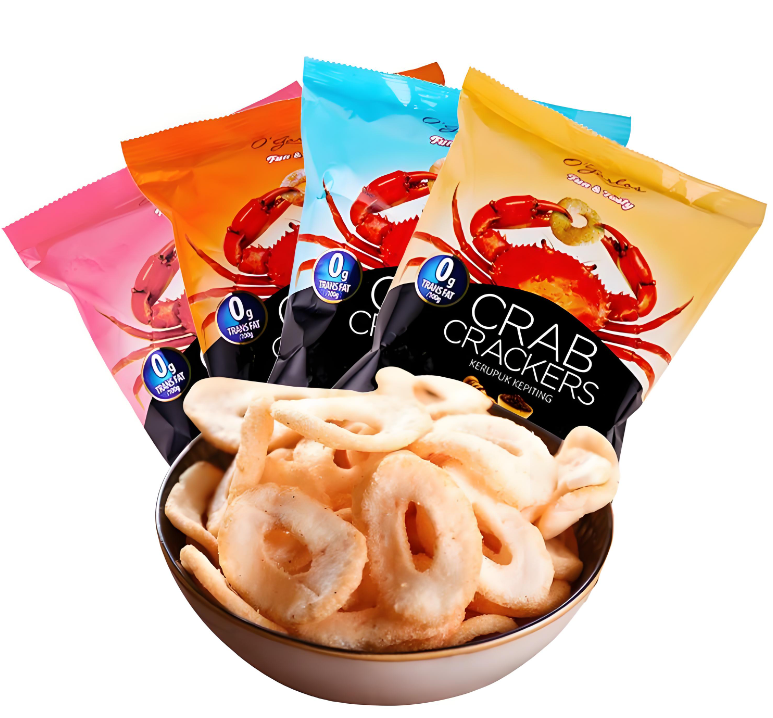Why Does Snack Packaging Around the World Vary?
Today, the global snack packaging market faces unprecedented pressure. Packaging uniformity has become a key issue — products on store shelves often look similar, making it hard for consumers to spot brands quickly. The economic downturn has heightened sales pressures, pushing brands to seek higher returns on packaging investments. At the same time, rising environmental awareness and stricter regulations have limited creative freedom in material choices and design innovation.
In this context, finding the right packaging partner has become essential for brands aiming to stand out. A partner capable of delivering high-performance, sustainable, and eye-catching packaging solutions can help brands differentiate themselves in a competitive market.
MTPAK is one such company — specializing in customized flexible packaging solutions that align with the global eco-friendly trend, balancing functionality with brand image. MTPAK offers snack brands flexible, sustainable, and market-adaptive packaging options, ensuring every pack achieves success worldwide.
Why observe packaging trends through snacks?
In the global consumer goods market, the snack industry has always been one of the most dynamic and responsive sectors. It serves as both a reflection of cultural expression and a testing ground for packaging innovation. Whether in material advancements, visual storytelling, sustainability trends, or shifts in consumer psychology, snack packaging often captures and mirrors the evolution of the times ahead of other categories.
A single snack package encapsulates the intricate logic of the entire supply chain — from material sourcing and printing technology to product protection, brand communication, and shelf presentation — every step influences the consumer’s first impression. Because snack products come in such diverse forms — from chips and nuts to dried fruits and protein bars — packaging must balance **barrier protection, grease resistance, ease of opening, and visual appeal. This makes snack packaging an ideal case study for observing packaging trends.
From a market perspective, snack packaging is a trend pioneer. High purchase frequency and short decision cycles make the snack sector the perfect testing field for new materials, printing technologies, and design languages.
For example:
l Eco-friendly materials such as recyclable PE structures, plant-based PLA films, and paper–plastic composites are often first piloted in snack packaging.
l High-impact finishes like spot UV, tactile coatings, and flexible printing technologies are typically introduced and popularized through snack products.
l Digital printing, limited editions, and personalized designs also tend to debut in the snack category to test market response.
From a cultural standpoint, snacks embody the richest range of consumption moments — from commuting and traveling to gatherings and home leisure — meaning packaging must deliver both portability and emotional connection.
Asian snack packaging emphasizes compactness and refinement, reflecting attention to detail; European markets favor eco-friendly and textured aesthetics, showcasing restraint and rational lifestyle values; while North American and Latin American markets embrace **bold, energetic visual languages, turning packaging into a medium of self-expression.
From a brand perspective, snack packaging has become a core asset of differentiation. In a category where product homogeneity is high, packaging often determines whether a consumer takes that second look. A well-designed pack not only stands out on the shelf but also communicates brand identity through color, typography, and texture.
Therefore, observing packaging trends through snacks is not just about one product category—it’s about understanding the evolution of consumer culture and packaging technology as a whole. With its rapid pace of innovation and direct consumer feedback, the snack industry has become the most sensitive barometer of the global packaging landscape.
Why do snack packaging styles differ across countries?
Snacks are one of the most culturally expressive consumer goods, and packaging is the most visible reflection of that diversity. The differences arise not only from climate and preservation needs but also from aesthetics, regulations, and consumer psychology.
Japan and South Korea: Snacks are seen as small luxuries of daily life. Consumers prefer small portions and individual packs, with high-barrier composite films to preserve freshness and aroma. The visual design focuses on delicate printing and matte textures, making each pack feel like a “gift.”
Europe: Deeply influenced by sustainability, European snack packaging favors minimalist, natural designs and eco-friendly materials such as recyclable paper or plant-based plastics. Carbon footprint labels and sustainability certifications are common.
North America:Packaging emphasizes **functionality and brand storytelling. Resealable zippers, moisture-proof nitrogen filling, and transparent windows are paired with bold typography and color blocks.
Southeast Asia & Latin America: Packaging is vibrant and festive, often using glossy PET or metallized films to reflect the joy of sharing. Local illustrations and bright imagery enhance emotional connection.
Where is snack packaging headed next?
Lightweight and High-Performance Materials: The industry is pursuing “less material, stronger protection,” with nanocoatings and bio-based composite films.
Cultural Fusion Design: Blending local cultural elements with global minimalist design for a “glocal” identity.
Circular Economy Integration: Building closed-loop systems from production to recycling.
Personalization and Limited Editions: Using digital printing for small-batch, emotionally resonant packaging.
Conclusion
Packaging is the second flavor of snack culture. From a bag of Mexican chili corn sticks to Finnish oat crisps, every layer of packaging translates culture into visual and tactile form. A successful snack package must find the perfect balance between technology, culture, and sustainability — protecting products across distances while creating familiarity and trust in new markets.
MTPAK continues to leverage its global manufacturing and design capabilities to help snack brands create packaging that is sustainable, impactful, and culturally resonant.
Let the world’s flavors be wrapped with warmth — and with a vision for the future.
Email:account@mtpak.com
Contact us:https://mtpak.com/contact-mtpak





